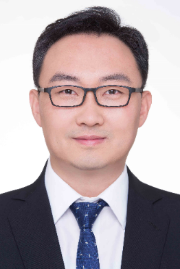
基本信息:
张明亮
干细胞与神经发育/再生研究组
电话:021-54562516
邮箱:mingliang.zhang@shsmu.edu.cn
研究方向:
课题组研究神经系统的修复与再生,聚焦于少突胶质祖细胞(OPC)发育与髓鞘生成/再生的调控机制研究和技术研发。利用干细胞生物学、化学生物学等手段,通过高通量化学小分子筛选,开发促进OPC激活和髓鞘生成的化学小分子药物,揭示调控髓鞘生成/再生的关键信号通路,阐明髓鞘形成对神经元发育与损伤修复的作用,探索通过促进髓鞘形成改善认知功能障碍和衰老的新方法,为利用化学手段调控髓鞘生成提供新技术,为髓鞘/神经损伤的内源性修复提供新策略。原创性成果发表在Cell Stem Cell, Cell Rep., Nucleic Acids Res., J. Mol. Cell Biol.等期刊。研究工作得到科技部干细胞重点研发专项,国家自然科学基金面上项目,上海市科技创新重点基础研究项目,上海市科委项目,上海市教委项目等基金支持。
个人简历:
张明亮,研究员,博士生导师,上海市“浦江人才”,上海市东方学者特聘教授。2002年毕业于厦门大学,获得学士学位;2009年毕业于中国科学院生物化学与细胞生物学研究所,获得博士学位;2010-2016年分别在美国斯克里普斯研究所(Scripps Research Institute)和美国加州大学旧金山分校格拉德斯通研究所(The J. David Gladstone Institutes)从事博士后研究;2016年起加入304am永利集团官网组织胚胎学与遗传发育学系,任支部书记,常务副主任。现任中国神经生物学会神经胶质分会委员、中国细胞生物学会青年工作委员会委员、中国医师协会基础研究与临床转化专业委员会(学组)委员、中国医药生物技术协会神经修复在再生分会委员、中国食品药品企业质量安全促进会细胞医药分会专家常委、《湖南师范大学学报(医学版)》编委、上海市生殖医学重点实验室特聘研究员、上海市“细胞稳态调控与疾病” 前沿科学研究基地委员、细胞分化与凋亡教育部重点实验室研究员。课题组聚焦于利用化学手段高效特异的诱导产生神经系统的干/祖细胞和终末分化细胞,并将化学策略应用于体内,实现内源细胞的原位再生;研发针对神经系统疾病的细胞/化学药,推动神经损伤修复与再生。
科研项目:
1.科技部 干细胞重点研发专项
2.国家自然科学基金委 面上项目
3.上海市科学技术委员会 科技创新重点基础研究项目
4.上海市科学技术委员会“浦江人才计划-A类”
论文与专著:
1. Yang Yudong, et al. Small-molecule activators specific to adenine base editors through blocking the canonical TGF-β pathway.Nucleic Acids Res.2022 Sep 23;50(17):9632-9646.
2. Wang Jia, et al. Reprogramming of fibroblasts into expandable cardiovascular progenitor cells via small molecules in xeno-free conditions.Nat Biomed Eng. 2022 Apr;6(4):403-420.
3. Zhang GuanYu, et al. Chemical approach to generating long-term self-renewing pMN progenitors from human embryonic stem cells.J Mol Cell Biol. 2022 Feb 24;14(1):mjab076.
4. Cheng Zhouli, et al. The Zscan4-Tet2 Transcription Nexus Regulates Metabolic Rewiring and Enhances Proteostasis to Promote Reprogramming.Cell Rep. 2020 Jul 14;32(2):107877.
5. Sun Pingxin, et al. Maintenance of Primary Hepatocyte Functions In Vitro by Inhibiting Mechanical Tension-Induced YAP Activation.Cell Rep. 2019 Dec 3;29(10):3212-3222.e4.
6. Liu Chang, et al. Conversion of mouse fibroblasts into oligodendrocyte progenitor-like cells through a chemical approach.J Mol Cell Biol. 2019 Jun 1;11(6):489-495.
7. Zhang Mingliang, et al. Pharmacological Reprogramming of Fibroblasts into Neural Stem Cells by Signaling-Directed Transcriptional Activation.Cell Stem Cell. 2016 May 5;18(5):653-67.
8. Cao Nan, et al. Conversion of human fibroblasts into functional cardiomyocytes by small molecules.Science. 2016 Jun 3;352(6290):1216-20.
9. Zhu Saiyong, et al. Human pancreatic beta-like cells converted from fibroblasts.Nat Commun. 2016 Jan 6;7:10080.
10. Xie Fei, et al. Reversible Immortalization Enables Seamless Transdifferentiation of Primary Fibroblasts into Other Lineage Cells.Stem Cells Dev. 2016 Aug 15;25(16):1243-8.
11. Zhu Saiyong, et al. Small molecules enable OCT4-mediated direct reprogramming into expandable human neural stem cells.Cell Res. 2014 Jan;24(1):126-9.
12. Xu Tao, et al. Concise review: chemical approaches for modulating lineage-specific stem cells and progenitors.Stem Cells Transl Med. 2013 May;2(5):355-61.
13. Tong Xiajing, et al. Est1 protects telomeres and inhibits subtelomeric y'-element recombination.Mol Cell Biol. 2011 Mar;31(6):1263-74.
14. Zhang Mingliang, et al. Yeast telomerase subunit Est1p has guanine quadruplex-promoting activity that is required for telomere elongation.Nat Struct Mol Biol. 2010 Feb;17(2):202-9.
15. Liao Xinhua, et al. Characterization of recombinant Saccharomyces cerevisiae telomerase core enzyme purified from yeast.Biochem J. 2005 Aug 15;390(Pt 1):169-76.
16. Zhang Mingliang, et al. Chemical Approaches to Controlling Cell Fate. inPrinciples of Developmental Genetics, 2nd Edition, Moody S., 2014, Academic Press. pp59-76.
专利与技术许可:
1. Zhang Mingliang, and Ding Sheng. Chemical reprogramming to generate neuronal cells, PCT/US2016/045290, WO/2017/027280
2.张明亮,杨玉东。特异性促进腺嘌呤碱基编辑器活性的化合物、化学调控方法及其应用。ZL202210266569.7



